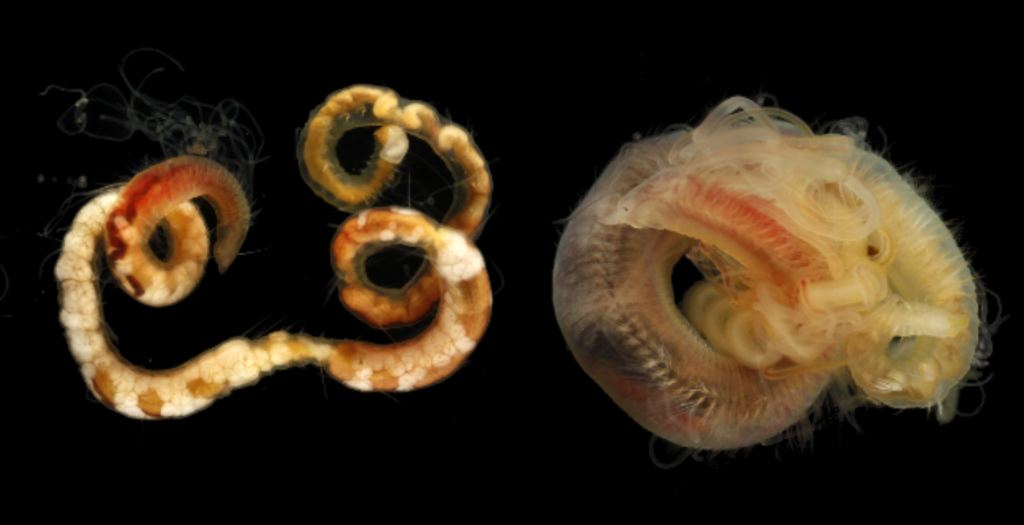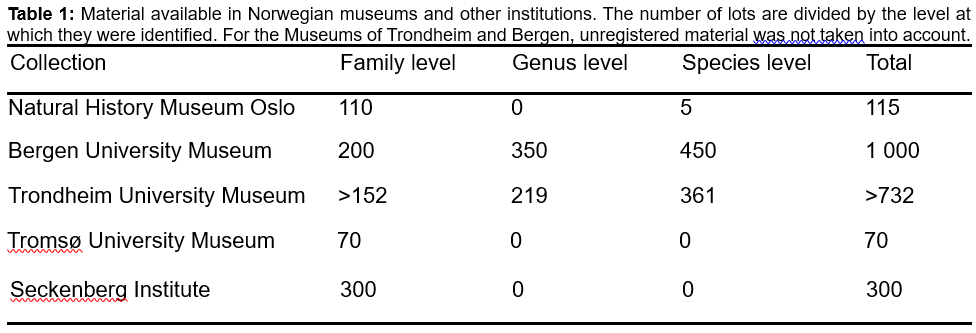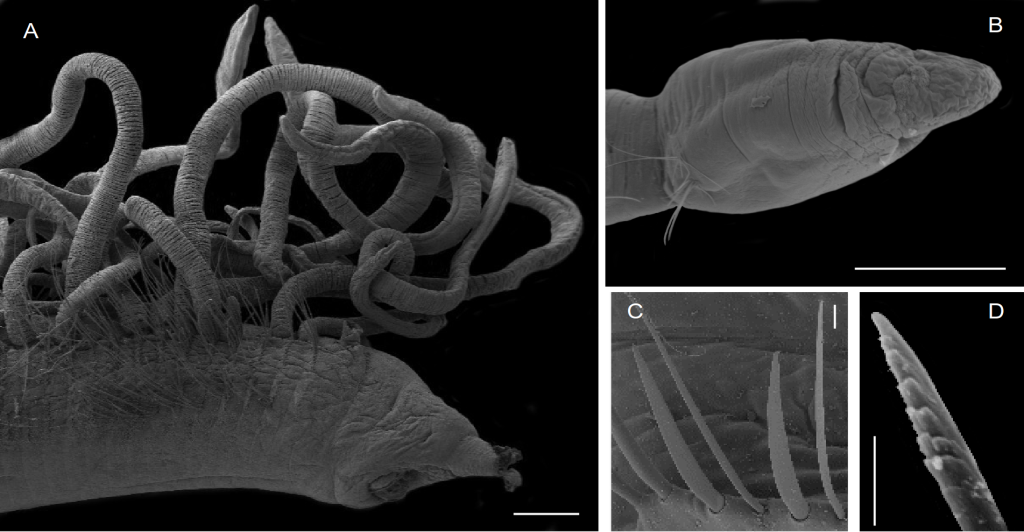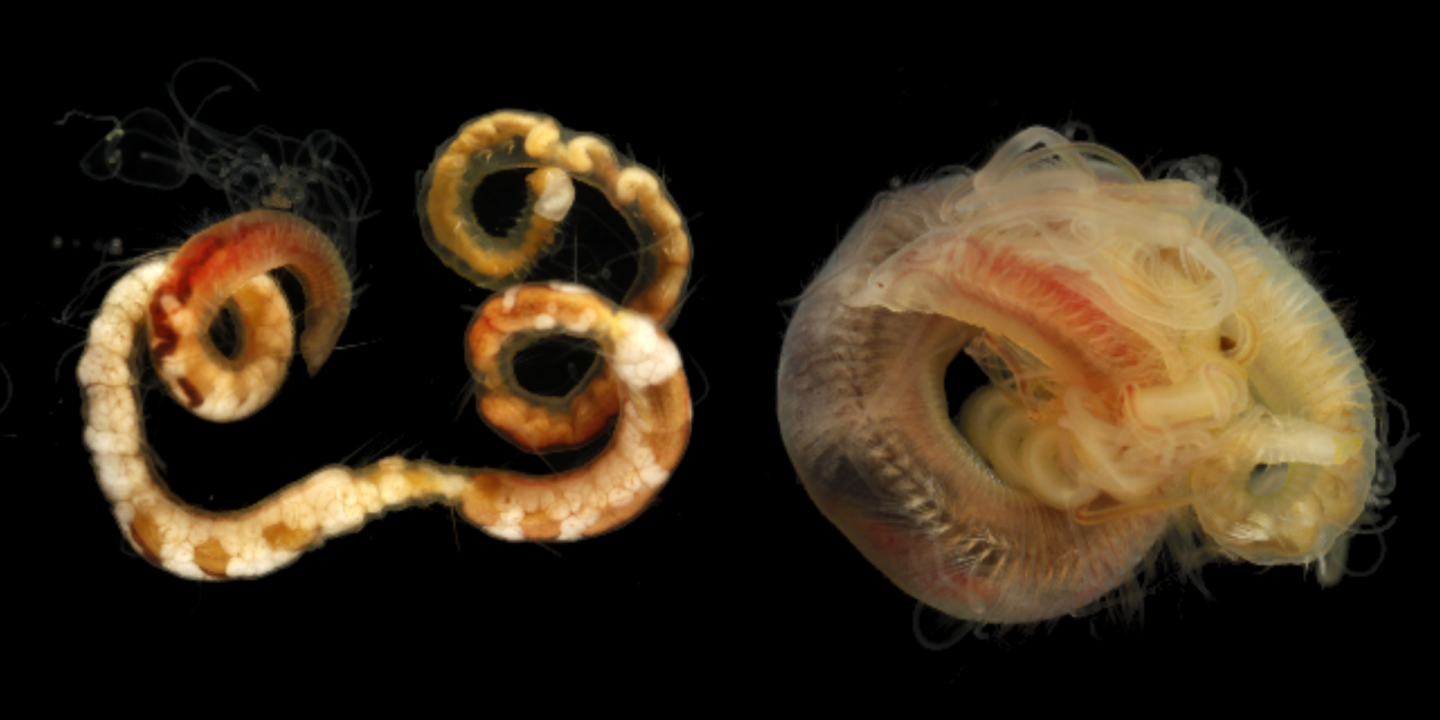We were fortunate to obtain finding from ArtsDatabanken for new project. Yesterday the contracts were signed and hence our project can start soon. We are an international team of researchers: Torsten Struck and Rita Austin from Norway, Arne Nygren from Sweden, and Maria Capa from Spain.
Maybe not surprisingly given the research background of most of us the project is about annelids. Annelida, or segmented worms, is a vast and diverse group of metazoans of over 20,000 species that includes, amongst others, earthworms, leeches, echiurids, sipunculids and polychaetes. With over 300 species, the polychaete family Cirratulidae is one of the more species-rich ones of the polychaete families and is common in benthic assemblages in a variety of habitats.

Cirratulids are small worms, usually less than 3 cm long, characterized by the long, slender filamentous branchiae present all over their bodies and their anterior tentacles present either as numerous long filaments or a pair of thick appendages (Fig. 1). While important in environmental monitoring, cirratulids are known to be taxonomically challenging and difficult to identify. To date, 24 species are recorded in Norway, but as diagnostic characters are difficult to observe and often not well defined species identification is challenging. Accordingly, a vast majority of the specimens collected today have not yet been identified to species level. Moreover, molecular studies indicate the presence of many undescribed and possibly cryptic species, with up to 20 unknown species in the deep sea alone. All of this questions the accuracy of some of the previous species-level identifications. Therefore, the diversity, distribution and species-ecosystem relationships within this common group are unknown despite large number of observations. In consequence, despite this species richness and common appearance cirratulids are also poorly known in Norway with respect to the number of species and their distribution in Norwegian water.

In our new project, we aim to use the extensive collections accumulated over the years in the Norwegian natural history museums to assess the diversity of the group in Norwegian waters (Table 1). The species shall be mapped at a fine scale over a very large geographic area, from the Skagerrak to Svalbard, and from coastal intertidal waters to the abyssal plains of the deep North-East Atlantic. We will also evaluate and assess diagnostic features within the family. To accomplish this will use scanning electron microscopy (Fig. 2) in combination with molecular data and classical taxonomic approaches. For the molecular data, we will also explore the options of museomics approaches to obtain sequence data from old museum material if feasible. This is the high risk, high gain part of our project.

We expect to:
- assess the species richness of this diverse but poorly known group of polychaetes in Norwegian waters using an integrative approach and developing re-descriptions of old species and descriptions of new species,
- map over 40 species at a fine scale across Norwegian waters, and
- generate of a reference barcode library, an online dichotomous key and online illustrated species pages to allow an easier identification of each species in Norwegian waters in the future.
![]()
